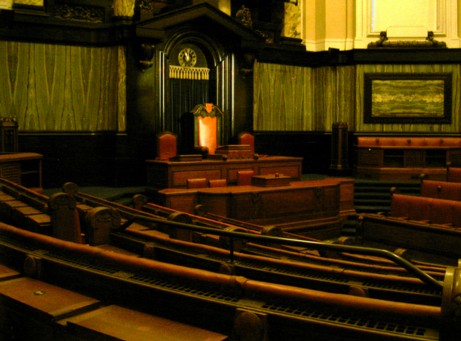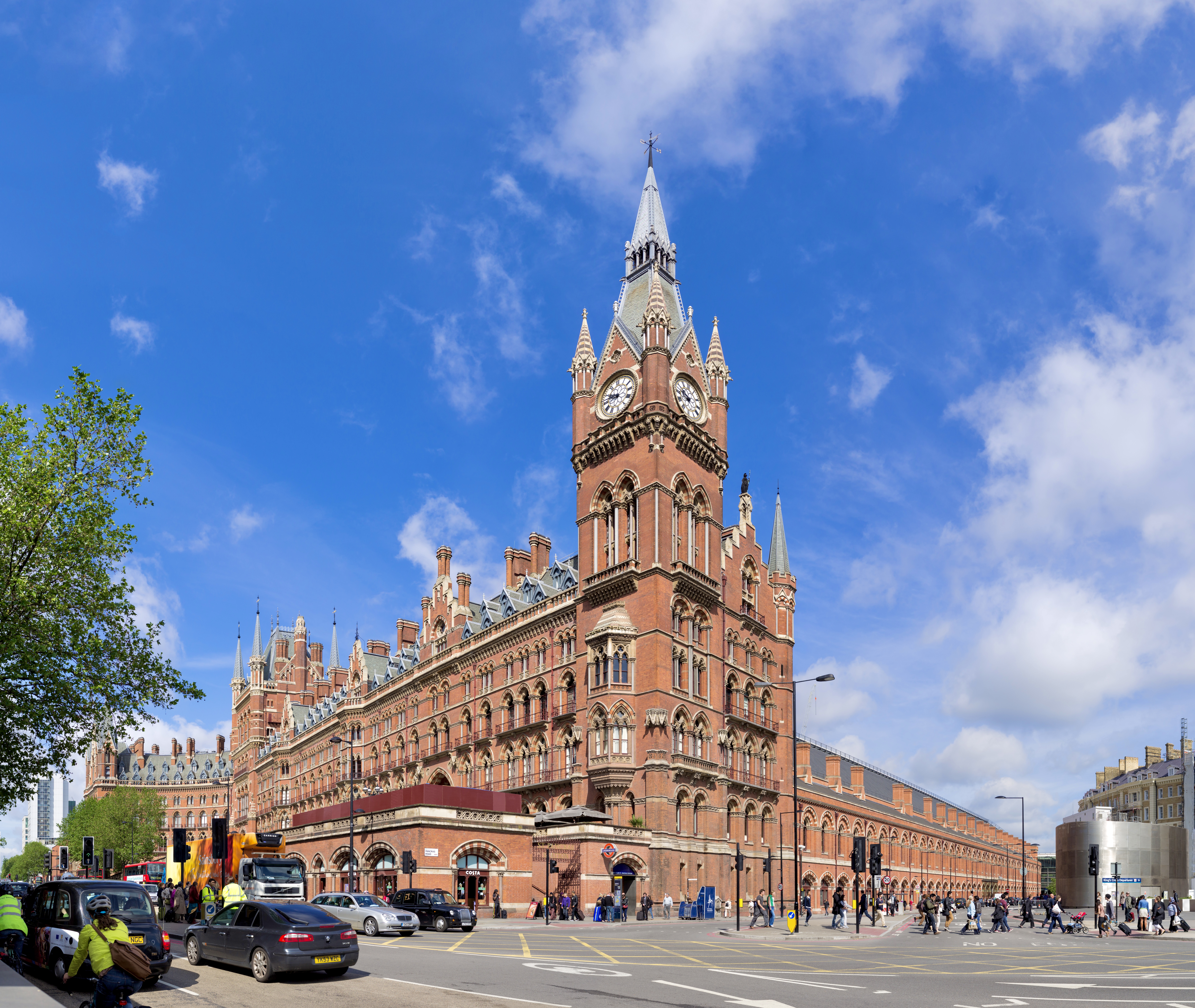|
John Bancroft (architect)
John Bancroft (28 October 1928 – 29 August 2011) was a British architect noted for his Brutalist designs for the Greater London Council (GLC). He joined the Architects’ Department of the GLC in 1957 and led the project to build Pimlico School from 1964 to 1970. The building was demolished in 2010 by Westminster City Council. Bancroft explained the design of the school in a 2008 interview: "I wanted pupils to feel they were part of a community... So I divided the place up into a form of glass screen so you would get views down from the level you were at into the other parts of the school. And also I wanted to make sure that you could from time to time glimpse the outside so that you would know where you were in the great surrounding community that Pimlico is, and the buildings surrounding it" His other school designs include the Elfrida Rathbone Girls' School in Camden and the Philippa Fawcett Teacher Training College in Streatham. Bancroft was a staunch defender of the GLC ... [...More Info...] [...Related Items...] OR: [Wikipedia] [Google] [Baidu] |
Greater London Council
The Greater London Council (GLC) was the top-tier local government administrative body for Greater London from 1965 to 1986. It replaced the earlier London County Council (LCC) which had covered a much smaller area. The GLC was dissolved in 1986 by the Local Government Act 1985 and its powers were devolved to the London boroughs and other entities. A new administrative body, known as the Greater London Authority (GLA), was established in 2000. Creation The GLC was established by the London Government Act 1963, which sought to create a new body covering more of London rather than just the inner part of the conurbation, additionally including and empowering newly created London boroughs within the overall administrative structure. In 1957 a Royal Commission on Local Government in Greater London had been set up under Sir Edwin Herbert, and this reported in 1960, recommending the creation of 52 new London boroughs as the basis for local government. It further recommended that ... [...More Info...] [...Related Items...] OR: [Wikipedia] [Google] [Baidu] |
Pimlico Academy
Pimlico Academy (formerly Pimlico School) is a mixed-sex education secondary school and sixth form with academy status, located in the Pimlico area of Westminster in London. History Conversion to academy After many years of underperformance, culminating with Ofsted's decision to place the school in special measures and the resignation of former head teacher Phil Barnard in December 2006, Westminster council controversially voted in March 2008 to transform Pimlico into an academy. This decision was contrary to consistent expression from the school's stakeholders (teachers, students and parents) that they wanted the school to remain a community school. The Westminster NUT voted in favour of strike action to express their objections to Westminster council's strategy. Staff, students, parents and former school governors held the view that the school's underperformance was due to long-term neglect by Westminster council. During the process of Pimlico's change to an academy, the coun ... [...More Info...] [...Related Items...] OR: [Wikipedia] [Google] [Baidu] |
Architect
An architect is a person who plans, designs and oversees the construction of buildings. To practice architecture means to provide services in connection with the design of buildings and the space within the site surrounding the buildings that have human occupancy or use as their principal purpose. Etymologically, the term architect derives from the Latin ''architectus'', which derives from the Greek (''arkhi-'', chief + ''tekton'', builder), i.e., chief builder. The professional requirements for architects vary from place to place. An architect's decisions affect public safety, and thus the architect must undergo specialized training consisting of advanced education and a ''practicum'' (or internship) for practical experience to earn a license to practice architecture. Practical, technical, and academic requirements for becoming an architect vary by jurisdiction, though the formal study of architecture in academic institutions has played a pivotal role in the development of t ... [...More Info...] [...Related Items...] OR: [Wikipedia] [Google] [Baidu] |
Brutalist Architecture
Brutalist architecture is an architectural style that emerged during the 1950s in the United Kingdom, among the reconstruction projects of the post-war era. Brutalist buildings are characterised by minimalist constructions that showcase the bare building materials and structural elements over decorative design. The style commonly makes use of exposed, unpainted concrete or brick, angular geometric shapes and a predominantly monochrome colour palette; other materials, such as steel, timber, and glass, are also featured. Descending from the modernist movement, Brutalism is said to be a reaction against the nostalgia of architecture in the 1940s. Derived from the Swedish phrase ''nybrutalism,'' the term "New Brutalism" was first used by British architects Alison and Peter Smithson for their pioneering approach to design. The style was further popularised in a 1955 essay by architectural critic Reyner Banham, who also associated the movement with the French phrases ''bé ... [...More Info...] [...Related Items...] OR: [Wikipedia] [Google] [Baidu] |
Westminster City Council
Westminster City Council is the local authority for the City of Westminster in Greater London, England. The city is divided into 20 wards, each electing three councillors. The council is currently composed of 31 Labour Party members and 23 Conservative Party members. The council was created by the London Government Act 1963 and replaced three local authorities: Paddington Metropolitan Borough Council, St Marylebone Metropolitan Borough Council and Westminster Borough Council. History There have previously been a number of local authorities responsible for the Westminster area. The current local authority was first elected in 1964, a year before formally coming into its powers and prior to the creation of the City of Westminster on 1 April 1965. Westminster City Council replaced Paddington Metropolitan Borough Council, St Marylebone Metropolitan Borough Council and the Westminster City Council which had responsibility for the earlier, smaller City of Westminster. All three ... [...More Info...] [...Related Items...] OR: [Wikipedia] [Google] [Baidu] |
County Hall, London
County Hall (sometimes called London County Hall) is a building in the district of Lambeth, London that was the headquarters of London County Council (LCC) and later the Greater London Council (GLC). The building is on the South Bank of the River Thames, with Westminster Bridge being next to it, to the south. It faces west toward the City of Westminster and is close to the Palace of Westminster. The nearest London Underground stations are and . It is a Grade II* listed building. History The building was commissioned to replace the mid 19th-century Spring Gardens headquarters inherited from the Metropolitan Board of Works. The site selected by civic leaders was previously occupied by four properties: Float Mead (occupied by Simmond's flour mills), Pedlar's Acre (occupied by wharves and houses), Bishop's Acre (occupied by Crosse & Blackwell's factory) and the Four Acres (occupied by workshops and stables). The main six storey building was designed by Ralph Knott. It is fac ... [...More Info...] [...Related Items...] OR: [Wikipedia] [Google] [Baidu] |
Listed Building
In the United Kingdom, a listed building or listed structure is one that has been placed on one of the four statutory lists maintained by Historic England in England, Historic Environment Scotland in Scotland, in Wales, and the Northern Ireland Environment Agency in Northern Ireland. The term has also been used in the Republic of Ireland, where buildings are protected under the Planning and Development Act 2000. The statutory term in Ireland is "protected structure". A listed building may not be demolished, extended, or altered without special permission from the local planning authority, which typically consults the relevant central government agency, particularly for significant alterations to the more notable listed buildings. In England and Wales, a national amenity society must be notified of any work to a listed building which involves any element of demolition. Exemption from secular listed building control is provided for some buildings in current use for worsh ... [...More Info...] [...Related Items...] OR: [Wikipedia] [Google] [Baidu] |
Open Plan
Open plan is the generic term used in architectural and interior design for any floor plan that makes use of large, open spaces and minimizes the use of small, enclosed rooms such as private offices. The term can also refer to landscaping of housing estates, business parks, etc., in which there are no defined property boundaries, such as hedges, fences, or walls. Open-plan office designs (e.g., tables with no visual barriers) reduce short-term building costs, compared to cubicles or private offices, and result in persistently lower productivity, dramatically fewer face-to-face interactions among staff, and a higher number of sick days. An open office plan may have permanently assigned spaces at a table, or it may be used as a flex space or hot desking program. In residential design, ''open plan'' or ''open concept'' (the term used mainly in Canada) describes the elimination of barriers such as walls and doors that traditionally separated distinct functional areas, such ... [...More Info...] [...Related Items...] OR: [Wikipedia] [Google] [Baidu] |
Twentieth Century Society
The Twentieth Century Society (C20) is a British charity which campaigns for the preservation of architectural heritage from 1914 onwards. The society's interests embrace buildings and artefacts that characterise 20th-century Britain. It is formally recognised as one of the National Amenity Societies, and as such is a statutory consultee on alterations to listed buildings within its period of interest, and must be notified of any proposed work to a listed building which involves any element of demolition. The society was formed as The Thirties Society in 1979, the year in which the prominent "Thirties – British art and design before the War" exhibition was shown at the Hayward Gallery. Its establishment was inspired by and loosely modelled on the Victorian Society, which aims to protect pre-1914 Victorian and Edwardian buildings. Bevis Hillier was the first president, and Clive Aslet the first honorary secretary. In 1992, the society changed its name to The Twentieth Century ... [...More Info...] [...Related Items...] OR: [Wikipedia] [Google] [Baidu] |
Victorian Society
The Victorian Society is a UK amenity society and membership organisation that campaigns to preserve and promote interest in Victorian and Edwardian architecture and heritage built between 1837 and 1914 in England and Wales. It is a registered charity. Goals The Society, a registered charity, fights to protect Victorian and Edwardian heritage from demolition or careless alteration. As a membership organisation, the majority of its funding comes from subscription fees and events. As one of the National Amenity Societies, The Victorian Society is a statutory consultee on alterations to listed buildings, and by law must be notified of any work to a listed building which involves any element of demolition. The society: * Provides advice to churches and local planning authorities on how Victorian and Edwardian buildings and landscapes can be adapted to modern use, while keeping what is distinctive about them. * Advises members of the public on how they can help shape the futur ... [...More Info...] [...Related Items...] OR: [Wikipedia] [Google] [Baidu] |
Docomomo International
Docomomo International (sometimes written as DoCoMoMo or simply Docomomo) is a non-profit organization whose full title is: International Committee for Documentation and Conservation of Buildings, Sites and Neighbourhoods of the Modern Movement. Mrinalini Rajagopalan, author of "Preservation and Modernity: Competing Perspectives, Contested Histories and the Question of Authenticity," described it as "the key body for the preservation of modernist architecture". History Its foundation was inspired by the work of ICOMOS, the International Council on Monuments and Sites, established in 1965. The work of Icomos was concerned with the protection and conservation of historical buildings and sites, whereas Docomomo was founded to take up the challenge of the protection and conservation of Modern Architecture and Urbanism. Docomomo International was founded in Eindhoven in 1988 by Dutch architects Hubert-Jan Henket and Wessel de Jonge. Henket chaired Docomomo International with de Jo ... [...More Info...] [...Related Items...] OR: [Wikipedia] [Google] [Baidu] |







